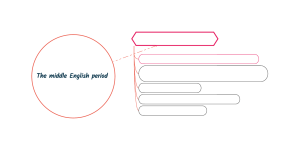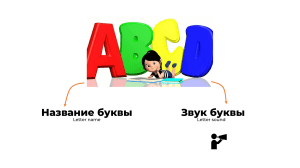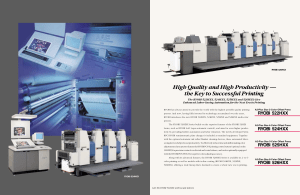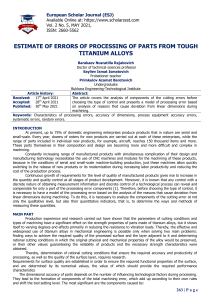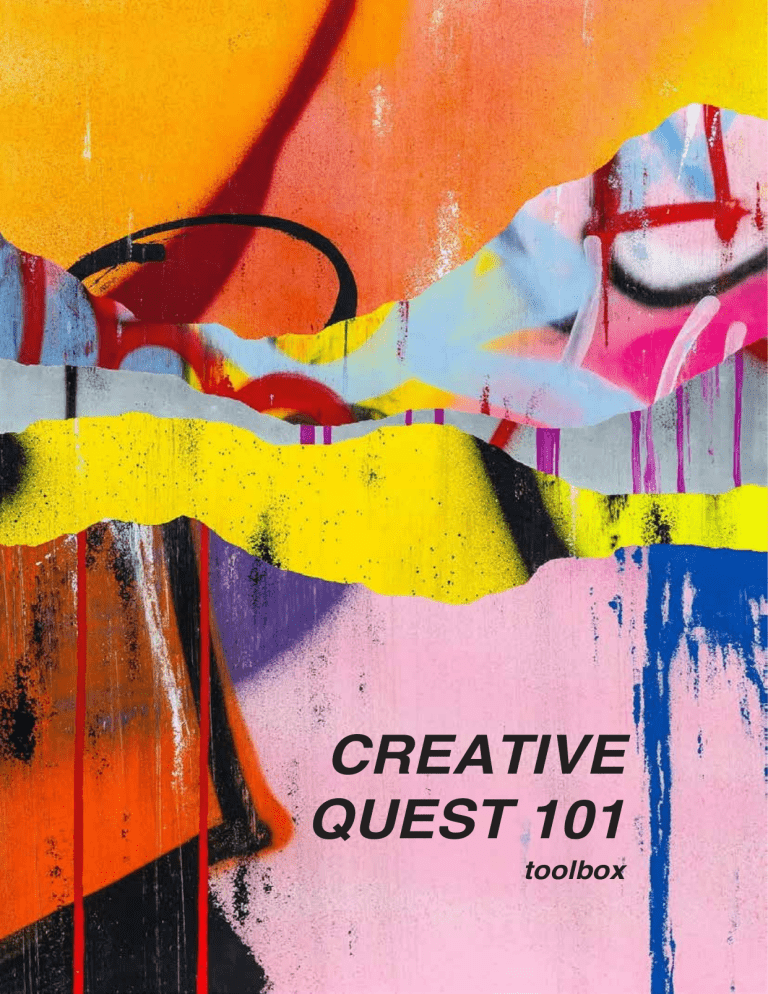
CREATIVE QUEST 101 toolbox Made as part of Erasmus+ Training Course "Creative Quest 101" 2023-1-LV02-KA153-YOU-000145134 Published by RED - Radosu Efektu Darbnica together with SYTEV Asociacion Juvenil Intercambia Sdruzhenie Walk Tohether Roes Cooperativa KOIN.S.EP. Comitato D'intesa Tra Le Associazioni Volontaristiche Della Provincia Di Belluno Odv Casa d'Abóbora - Associação Juvenil Love & Care for People / Blackwater Training and Consulting Design by Amanda Strīģele Cover art by Tilt Funded by the European Union. Views and opinions expressed are however those of the authors only and do not necessarily reflect those of the European Union, European Commission or Agency for International Programs for Youth. Neither the European Union nor the granting authority can be held responsible for them. about creative quest 101 The main aim of the training course “Creative Quest 101” was to develop knowledge of youth workers and youth leaders in the concept creation of creative workshops and give them practical skills in artistic printing techniques. As a result it will increase the number of available creative activities for young people in order to improve their mental health and give organizations a new tool to use also for promoting their social topics and goals. In this toolbox you will find step by step guides for printmaking techniques (screen printing, linocut, stencil) and 9 ways to integrate them in creative workshops in order to promote different European Youth Goals table of contents Linocut Step by step guide Workshop 1 : Silent cutting Workshop 2 : Workshop 3 : What does European Union mean to you Screen printing Step by step guide Workshop 4 : Upcycle Workshop 5 : Youth participation in EU through the simple language of art Workshop 6 : Be creative Stencil Step by step guide Workshop 7 : Recycling for your future Workshop 8 : With art against vandalism Workshop 9 : Better together linocut Linocut, also known as lino print, lino printing or linoleum art, is a printmaking technique, a variant of woodcut in which a sheet of linoleum (sometimes mounted on a wooden block) is used for a relief surface. Step by step technical guide Materials and tools Linoleum block (or rubber block) Carving tools (linoleum cutters) Brayer (ink roller) Printing ink Printing paper or fabric Bench hook or printing press (optional) Pencil and sketch paper Tracing paper (optional) Palette or glass surface for inking Step 1: Design Preparation Start by sketching your design on paper. Keep in mind that linocut is a relief process, so areas you carve away will not receive ink. Once you are satisfied with your design, transfer it to the linoleum block. You can do this by placing the sketch on the block and tracing over the lines with a pencil, or you can directly draw on the block. Step 2: Carving Choose the linoleum cutter that corresponds to the thickness of the lines in your design. The cutters typically come with different blades for various line widths. Begin carving by removing the linoleum from areas that you want to remain white or blank in the final print. Remember that linocuts create a mirror image of your design when printed, so consider this when carving text or specific elements. Work carefully, starting with larger areas and gradually refining details. Be mindful of your fingers while carving to avoid accidents. Test the carving on a scrap piece of linoleum to get a feel for the tools and to adjust the pressure. Step 3: Inking the Block Squeeze a small amount of printing ink onto a palette or glass surface Roll the brayer in the ink until it evenly coats the roller. Apply the ink to the linoleum block, ensuring that all carved areas receive an even coat. Work the ink into the carved lines. Step 4: Printing Place your inked linoleum block face-up on a clean, stable surface. Position the paper or fabric on top of the block, aligning it carefully. Use a baren, the back of a spoon, or a printing press to apply even pressure over the entire surface of the paper, transferring the ink from the linoleum block. Step 5: Repeating the Process If you want to create multiple prints, re-ink the linoleum block before each impression. Experiment with different colors, papers, and inking techniques to achieve variations in your prints. Step 6: Cleaning Up Clean your linoleum block and tools with soap and water or according to the manufacturer's recommendations for the specific carving materials. VIDEO GUIDE CLICK HERE 1 LINOCUT: SILENT CUTTING European Youth Goal: Mental Health and Wellbeing Aim - to create connection among group and express their inner feelings Objectives To create connection between participants To create undestanding and trust in each other To give participants possibility to express their inner state Time: 2-3 hours Resources needed lino blocks cutting tools rubber rollers glass/acrylic sheet for rolling out paint thick paper paint (for paper) Participant profile Young people with difficulties in verbal communication (shy, facing psychological and emotional difficulties etc.) Descripton 1. Intro – introduction to materials and linocut technique 2. Split participants in groups of 2-4 people (depends on linoblock size, larger the block, larger the group can be) 3. Each group is given one lino block and carving tools 4. A question is given for the task ( How do you feel about today? How do you feel in the group? What did you learn today? What are your expectations from ...? etc.) 5. The task is to make a group linocut answering the question. Task is done in silence. Carving is done by one person at the time. Timer is set for 3-5 minutes when it must be passed to the next group member. 2-3 rounds in total. 6. After linocut is done you go to painting station, roll over the lino block the paint and transfer the linocut on paper for each member of the group. 7. At the end all participants can share in the group what they how done and how was the process Things to keep in mind: During introduction part, you can give each participant a small block to train on if they haven’t done carving before Be aware - cutting tools are sharp, be careful 3 LINOCUT : WHAT DOES EUROPEAN UNION MEAN TO YOU? European Youth Goal: Connecting EU with Youth Aim - Connect Youth with European Union Objectives To educate local youth about European Union To share information about Erasmus+ programme To provide basic information about different printing techniques, mainly linocut Time: 4 hours Resources needed lino blocks cutting tools pencils paper tracing paper printer paint rubber rollers glass/acrylic sheet for rolling out paint thick paper Paritcipation profile: 15-20 years old (female/male) Group size: 20-25 people Description Short introduction about the workshop followed by presentation on topics about EU, how it works, benefits of Erasmus+, Youth Passes. Introduction about different printing techniques with focus on linocut method through video tutorials and live presentation. Participants make their designs on the topic, transfer them to lino blocks, proceed to cut the designs out and print them on paper. Networking after finished workshop Things to keep in mind: Working with cutting tools can be dangerous, make sure to keep a first aid kit at hand in case there is an accident screen printing Screen printing is a printing technique where a mesh is used to transfer ink (or dye) onto a substrate, except in areas made impermeable to the ink by a blocking stencil. Step by step technical guide making the screen Materials and tools Screen printing frame Mesh fabric (choose the appropriate mesh count for your project) Staple gun or adhesive Utility knife or scissors Step 1: Choose a Screen Printing Frame Select a screen printing frame of the appropriate size for your design. Frames are typically made of wood or aluminum. See in video instruction how to build it from scratch or use for instance old wooden photo frame or frame from canva. Step 2: Choose Mesh Fabric Select the mesh fabric based on your project's needs. Mesh comes in different counts, with higher counts providing finer detail but less ink passage. T-shirts and Fabric.110-160 mesh count: Ideal for bold designs with fewer details or when printing with thicker inks. It allows more ink to pass through, providing better coverage. Paper. 160-230 mesh count: Suitable for fine detail and text on paper. Higher mesh counts are preferred for detailed prints on smoother surfaces. Wood and Cardboard. 80-160 mesh count: Depending on the surface texture, you may need a lower mesh count for rougher surfaces like cardboard or higher mesh count for smoother wood surfaces. Metal, Plastic, and Glass. 230 mesh count and above: Use higher mesh counts for fine detail on non-absorbent surfaces like metal, plastic, or glass. The higher mesh count allows for precise printing. Fine Art Prints and Posters. 200-305 mesh count: For detailed art prints on fine paper or posters, a higher mesh count is preferred to achieve intricate details and smooth gradients. Step 3: Stretch the Mesh Lay the mesh fabric over the frame, ensuring it's larger than the frame. Start in the center of one side and use a staple gun to attach the mesh to the frame. Stretch the fabric taut but be careful not to distort the mesh. Step 4: Staple Remaining Sides Move to the opposite side of the frame and stretch the mesh, pulling it tight. Staple it in place. Continue stapling the mesh to the frame, working from the center towards the corners. Stretch and staple evenly to maintain tension. Step 5: Trim Excess Mesh and Check Tension Trim the excess mesh fabric using a utility knife or scissors, leaving a small margin beyond the staples. Ensure the mesh is evenly tensioned across the frame. Tap the mesh gently with a finger; it should produce a drum-like sound. Adjust tension as needed by adding or removing staples. Step 6: Prepare the Mesh for Emulsion Clean the mesh thoroughly to remove any dust or debris. Degrease the mesh using a screen degreaser to remove any oils that might hinder emulsion adhesion. If you want to skip these steps you can purchase already made screen printing screens. VIDEO GUIDE CLICK HERE Step by step technical guide screen-printing Materials and tools Screen (with mesh appropriate for your project) Emulsion and sensitizer Screen printing ink Squeegee Exposure unit or strong light source Transparency film (and printer) or stencil Water source and hose Printing ink and substrate (e.g., paper, fabric) Step 1: Design Preparation Create or choose a design for your screen print. Make sure it's suitable for screen printing and consider the number of colors involved. It’s best to start with one colour designs. Step 2: Screen Preparation Clean the screen thoroughly to remove any dirt or residue Coat the screen with emulsion using a scoop coater, covering both sides evenly Let the emulsion-coated screen dry in a dark and dust-free environment (it usually takes at least a day) Step 3: Creating the Stencil Print your design on a transparency film or create a stencil. Place the stencil on the dry, coated screen and secure it with tape. Expose the screen to UV light using an exposure unit. This will harden the emulsion, except where the design blocks the light. Step 4: Washout Remove the stencil from the screen. Rinse the screen with water, using a gentle spray or hose, to wash away the unexposed emulsion, leaving behind the stencil (it’s possible to use also shower) Step 5: Drying Allow the screen to dry completely before proceeding to the next steps. Step 6: Set Up Printing Area Set up a stable surface for hand printing. Place the substrate (e.g., T-shirt or paper) on the printing surface and secure it or ask someone to hold it. Step 7: Inking Place the screen over the substrate, aligning the design correctly. Apply a line of ink at the top of the screen. Using a squeegee, pull the ink across the screen in one smooth motion, ensuring even coverage. Repeat pulling with higher pressure. Lift the screen and check the print. Step 8: Curing and Clean-Up If using water-based ink, let the print air dry. If using plastisol ink, cure the print by applying heat with a heat gun or running it through a conveyor dryer. Clean the screen and tools immediately after printing to prevent ink from drying on the screen. Tips: Practice on scrap material before starting your actual project. Store screens in a dark and cool place to prolong their lifespan. 4 SCREEN PRINTING: UPCYCLE European Youth Goal: Sustainable Green Europe Aim - to use the method of screen printing to introduce young people to the concept of upcycling Objectives Introduce screen printing to young people Repurpose used textile Discuss the problem of fast fashion Time: 5 hours Resources needed Mesh frames with emulsion already applied laptop (bringing your own is not mandatory but welcome) printer, transparent film red light UV light textile paint cardboard, printing tools some spare T-shirts and other textiles (encourage people to bring their own or provide second hand) Paritcipation profile: 15-20 years old (female/male) Description Intro: Introduction to screen printing and the aim of the workshop Warm-up: Presentation and demonstration of screen printing Main program: Creating the design and transferring it on textile; discussion about the problem of fast fasion and upcycling Debriefing: Presentation (fashion show) Closure: Option to take the finished product home; encouraging people to pass the knowledge and raise awareness about discussed topics Things to keep in mind Only a few people will be able to work on printing at a time. Find a way to include those that are waiting for their turn to print chosen designs Use second hand textile or encourage participants to bring their own (especially wearable textiles with some spots on them that can be nicely covered by screen printing) 5 SCREEN PRINTING: YOUTH PARTICIPATION IN EU THROUGH THE SIMPLE LANGUAGE OF ART European Youth Goal: Connecting EU with Youth Aim -Young people creating art inspired by their idea of youth participation in EU Objectives: A creative workshop for screen printing technique Encouraging a discussion for the possibilities of youth participation Exhibition Time: One day + exhibition day Resources needed Emulsified and fully dried mesh frames paint suitable for the screen printing UV light red light printer and film for the designs canvas for printing Participant profile: 30 artistic young people interested in youth participation Descripton: 1. Intro – what is the plan for the day, introduction to the materials (10 minutes) 2. Supervising the creative process – the participant create a design for screen printing inspired by the aim of the project (3 hours) 3. Exposing the mesh frames – they must be already prepared by the coordinators with the emulsion the day before and be fully dry (1 and half hour) 4. Printing the designs on canvases (1 hour) 5. Discussing the topic of youth participation in EU Two days after the project coordinators set up an exhibition and make an opening to which they invite workshop participants and citizens of the city. Program of the exhibition: 1. Intro – coordinators explain the creative process and purpose of the project 2. Open discussion with the citizens and the participants on the topic of youth participation in EU 3. Free time to see the exhibition Things to keep in mind: For bigger projects like this it can be beneficial to provide participants with some informative resources on the selected topic before the actual event 6 SCREEN PRINTING: BE CREATIVE European Youth Goal: Connecting EU with Youth Aim of the workshop is to introduce a new art technique (screen printing) to the youth and foster community building Objectives Introduce screen printing as a method of artistic self expression Give opportunity to the local youth to network Include marginalised young people (optional) Participant profile : Young people (15-25 year old) with no experience in screen printing Time: 2 hours Resources needed: Pre-prepared mesh frames with designs, textile pain printing tools cardboard or thick paper tote bags and t-shirts Description Intro: Presentation of the printing technique Warm up: Simple energiser Main activity: Screen printing on tote bags and/or T-shirts Debriefing/Reflection: Sharing results with the group Closure: Networking Things to keep in mind Working with textile paint can be messy. Make sure to cover any surface you don’t want to get paint on and use disposable gloves You can give the possibility for participants to send in their preferred designs beforehand stencil Stencilling produces an image or pattern on a surface, by applying pigment to a surface through an intermediate object, with designed holes in the intermediate object. The holes allow the pigment to reach only some parts of the surface creating the design. Step by step technical guide Materials and tools Stencil material (stencil paper, acetate, cardboard, etc.) Craft knife or utility knife Cutting mat or protective surface Pencil Design or image to stencil Masking tape or painter's tape (optional) Step 1: Choose Your Stencil Material Select a suitable material for your stencil. Common options include stencil paper, acetate sheets, cardboard, or even reusable stencil blanks. The material choice depends on the project and the desired durability of the stencil. Step 2: Choose or Create Your Design Select a design or image for your stencil. This could be a hand-drawn design or a printed image. Keep in mind that intricate details may be challenging to cut, especially for beginners. You can create stencil designs out of ordinary images/photos by various free “stencile generators” online Step 3: Transfer the Design onto the Stencil Material Place the chosen design under the stencil material. Secure both layers in place with masking tape or painter's tape to prevent slipping. Trace the design onto the stencil material using a pencil. Ensure that all essential lines are marked clearly, as these will be the areas you cut out. Step 4: Cutting Out the Design Place the stencil material on a cutting mat or another protective surface to avoid damaging your work surface. Using a craft knife or utility knife, carefully cut out the marked areas of the design. Take your time, especially around intricate details, and use a straight edge or ruler for straight lines. Step 4: Cutting Out the Design Place the stencil material on a cutting mat or another protective surface to avoid damaging your work surface. Using a craft knife or utility knife, carefully cut out the marked areas of the design. Take your time, especially around intricate details, and use a straight edge or ruler for straight lines. Step 5: Remove Excess Material Once you've cut out the entire design, gently remove the excess material around the edges. Be cautious not to tear any delicate parts of the stencil. Inspect your stencil, and make any necessary adjustments. Clean up any rough edges or unwanted marks, ensuring that the stencil is clean and ready for use. Step 6: Testing Your Stencil Before using the stencil on your final project, do a test run on a scrap piece of material to check for any issues or imperfections. Adjustments can be made as needed. Step 7: Stenciling Place your stencil on the desired surface and secure it in place with masking tape if necessary. Apply paint, ink, or another medium using a brush, sponge, or spray, depending on your project. VIDEO GUIDE CLICK HERE 7 STENCIL : RECYCLING FOR YOUR FUTURE European Youth Goal: Sustainable Green Europe Aim of the workshop is to raise sensibility/awareness about recycling Objectives Discuss topics related to recycling Use stenciling Participant profile - local youth (15-25 y.o.) Resources Recycle papers trash bags trash bin pamphlets paint brushes cutting tools cutting boards Time: 2 hours Description Introduce the 3R principle (reuse, reduce and repropose/recycle). Discuss topics involving recycling and its importance to save world: oceans, land, forests, animals and fresh air. Then we invite our Erasmus+ participants to share about the experiences in their countries and global issues in general across the world. Main activity: Introduce stencil and it tehniques making personalized trash bin signs using stencils Closure/reflection: have participants fill a questionnaire to know if their mindset changes after getting specific information about recycling. 8 STENCIL: WITH ART AGAINST VANDALISM European Youth Goal: Space & Participation for All Aim of the workshop is to raise awareness of vandalism, offensive graffiti being harmful by using art technique to improve common public spaces. Objectives Fight vandalism Offer positive alternative to vandalism Topic: covering offensive graffiti by the use of stencil Group size & participant profile: 15 participants (13 - 16 y.o.) interested in improvement of surroundings Time: 4 hours Resources: prepared stencil designs spray paint Description Introduction about vandalism, offensive graffiti, small discussion about its effect on surrounding area Presentation of stencil as an art technique, used materials Walk to 2-3 predetermined locations with real life examples of offensive graffiti (preferably each location has more than one graffiti to cover) Reflections and discussion Why should we cover offensive graffiti? Feedback Explanation about why offensive graffiti is bad How can simple art improve everyday life? Things to keep in mind: Always get permission from building owners and agree on a design that would be more appropriate beforehand 9 STENCIL: BETTER TOGETHER European Youth Goal: Inclusive societies Aim - integrate marginalised young people in local community Objectives: Bring together marginalised young people with more active youngsters from youth organisations Inform marginalised young people about opportunities for young people Time: 5 hours Resources needed carboards craft knives cutting boards paint brushes canvas or wall to put stencils on Participant profile: equal group of youngsters active in youth organisations and marginalised young people currently not involved in youth organisations Descripton: Intro – get to know each other activities and split in groups, which consist of both groups Presentation on how to create stencil Creative process: design preparation, cutting and painting in mixed groups Presentation of the art work by groups Presentation about future opportunities to get involved into acitivities by organisation Things to keep in mind: For bigger projects like this it can be beneficial to provide participants with some informative resources on the selected topic before the actual event use it! Dear changemakers, the power to shape a brighter future lies in your hands. This toolbox is not just a collection of techniques; it is a guide to nurturing the hearts and minds of the next generation. Embrace these techniques, infuse them with your unique passion, and watch as young individuals blossom into confident, compassionate, and visionary leaders. Together, let's inspire greatness and create a world where every young mind thrives and makes a lasting impact.
